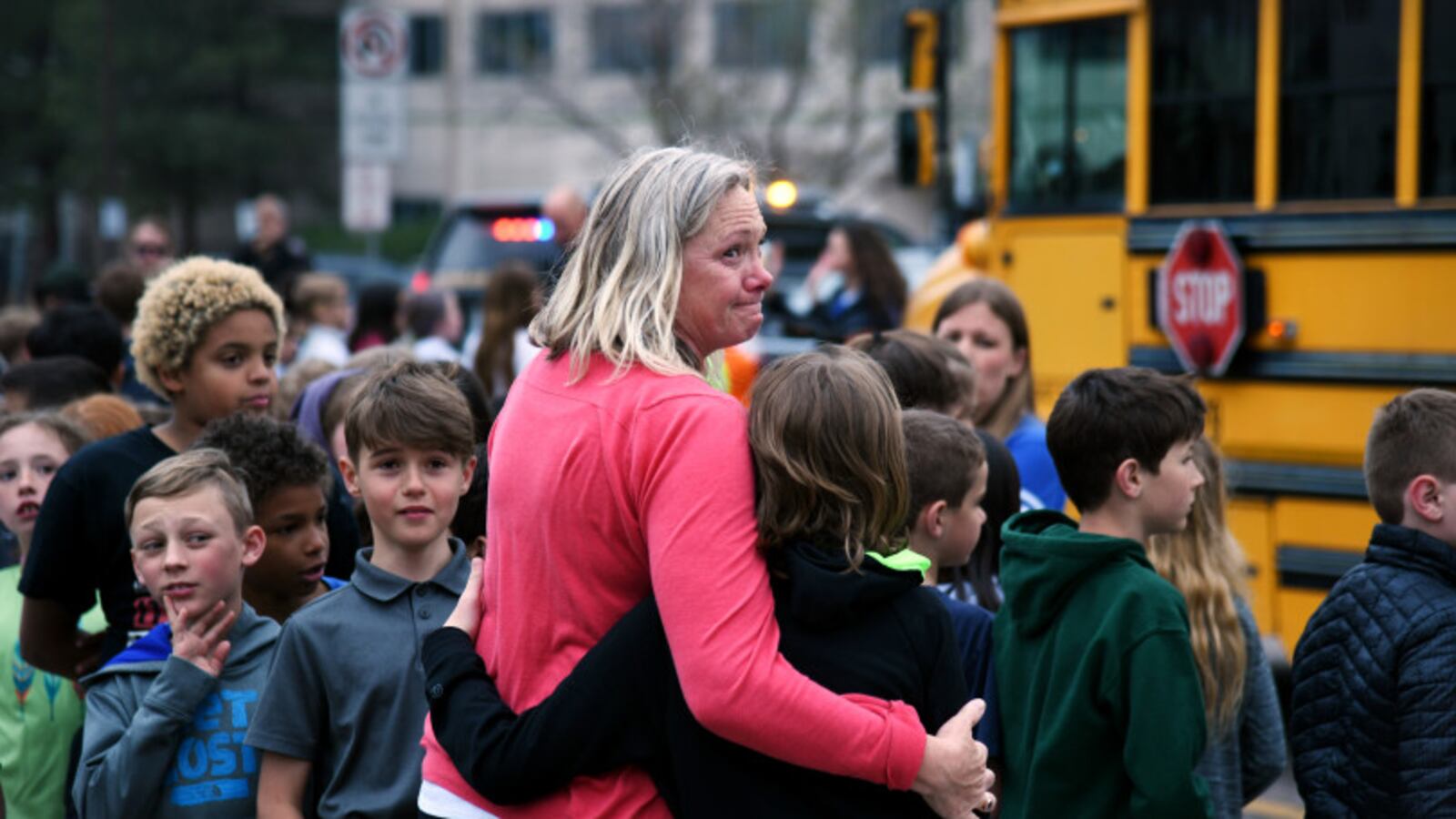From the presence of social workers to the way schools carry out threat assessments, Colorado’s school safety landscape looks like a patchwork quilt of practices and resources.
This lack of consistency was one of the key takeaways from the first meeting this week of a special legislative committee on school safety, convened in the aftermath of the May shooting at STEM School Highlands Ranch.
The four Democrats and four Republicans on the committee will meet four times and perhaps draft bills designed to make students and teachers safer. The committee is casting a wide net, taking into account school culture and climate, mental health services, and the problem of youth suicide, which claims far more lives than school shootings or other homicides.
“Shootings are one mechanism of violence,” said state Rep. Dafna Michaelson Jenet, the Commerce City Democrat who is chairing the committee. “Unfortunately there are many others: bullying, relationship violence, cyberbullying. We are going beyond shootings. We are not ignoring shootings, but there is a lot that goes into violence in schools, and we would like to address the entirety of it, because I believe the root causes are the same.”
A previous committee that also looked at school safety issues failed to produce any legislation.
Here are four things we heard at the first meeting of Colorado’s School Safety Committee:
Gun control is not going to be the main focus of this committee.
Dozens of red-shirted gun control activists from Moms Demand Action filled the hearing room, but the conversation barely touched on firearms. Occasionally one of the women would mutter “guns” when lawmakers questioned what they could do that would make a difference.
But gun control is one of the most contentious and partisan issues in the Colorado legislature, and committee members want to focus on areas of potential agreement. That doesn’t necessarily mean Democrats won’t run additional gun control legislation in 2020. But it doesn’t seem likely that the school safety committee will take the lead.
One gun-related issue that did come up: safe storage.
Firearms account for a significant portion of suicides, with many youth who getting access to their parents’ guns. Safe storage laws are associated with fewer firearms deaths among children, and Colorado’s law is weaker than those in many states.
Schools are pretty safe, but many students and teachers don’t feel safe.
By nearly every metric, students are safer in school today than they were in the mid 1990s. They’re less likely to be murdered, to be victims of aggravated assault or sexual violence, to be threatened, to get in a fight, or to carry a gun.
But they don’t feel safe. Surveyed about their school-related fears, students ranked experiencing a mass shooting second, behind bullying and ahead a peer pressure, and parents ranked it third.
In testimony to the committee, students, parents, and teachers described the long reach of traumatic events that touch many more people than just those directly affected.
Ethan Reed, a rising junior at Legend High School in Parker, got live updates via SnapChat from a friend as he escaped the STEM School shooting. Reed broke down as he told the committee his friend now suffers from PTSD and anxiety.
Other students described the intense stress provoked by lockdowns and lockouts during which they have no idea how serious a threat they face and rumors are flying.
We know very little about what causes mass shootings, but we know a lot about the risk factors for violence and self-harm.
Mass shootings are rare enough that they’re hard to study and draw firm conclusions. But researchers know a lot about the factors that place people at risk of committing violence and of harming themselves. They include lack of connection to the broader community, including the school community, harmful norms about masculinity and femininity, experiences of trauma, abuse, and violence, and normalization of aggression.
Advocates hope that efforts to create more positive school climates and a greater sense of engagement with school and peers can reduce both violence and suicide. Sources of Strength, a peer-based program in place in 80 Colorado high schools, has been found to reduce suicide rates in studies in other states, and a study currently underway in Colorado is looking to measure whether it reduces violence among peers as well.
There’s not much consistency in Colorado’s school safety and school-based mental health efforts, and funding is a factor.
Just 16 percent of Colorado high school students have access to Sources of Strength, and just 11 percent of middle school students have access to evidence-based life skills courses, state officials said.
“Our programs don’t have a lot of reach,” said Lindsey Myers, chief of the Mental Health Promotion Branch of the Colorado Department of Public Health and Environment.
Colorado pioneered anonymous threat reporting with the Safe2Tell hotline after Columbine, but districts don’t all use the same threat assessments or even necessarily threat assessment procedures that are based on rigorous studies.
Not all school resource officers have recommended training in mental health, teen development, and working with students with disabilities.
Sometimes schools don’t share information about threats with local law enforcement due to confusion about what’s allowed under federal laws that aim to protect student privacy.
These gaps are likely to be a major focus of the committee.
“We have a lot of systems in place, but we haven’t brought those systems to scale,” said state Sen. Julie Gonzalez, a Denver Democrat. “How do we bring it to scale in a sustainable way that doesn’t burden community?”
The next meetings are scheduled for Aug. 20, Sept. 20, and Oct. 31. You can submit public comment here.

